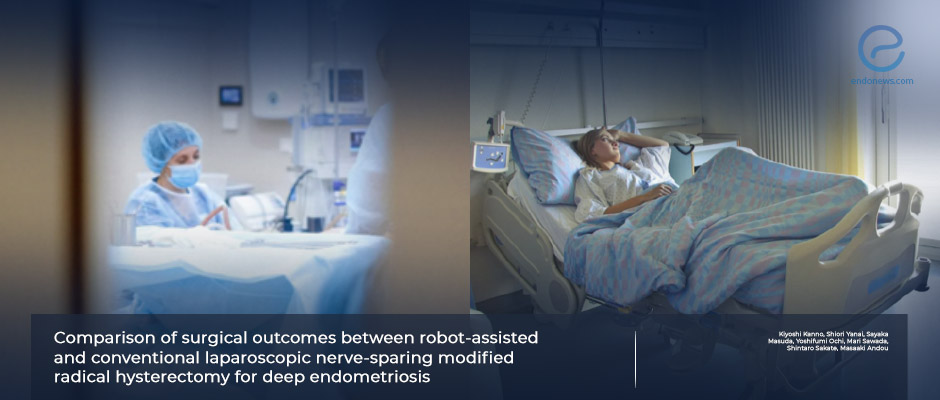Nerve-Sparing Surgery Safe in DIE
Oct 10, 2024
Both robot-assisted and conventional laparoscopic approaches are safe and reproducible.
Key Points
Highlights:
- Robot-assisted nerve-sparing modified radical hysterectomy is associated with longer operative times but lower estimated blood loss compared to conventional laparoscopy for the treatment of deep infiltrating endometriosis (DIE).
- The number of days in hospital after the operation and complications are similar between the two approaches.
Importance:
- Nerve-sparing surgery is safe for the treatment of DIE both using a robot-assisted approach and a conventional laparoscopic approach.
What’s done here:
- This article is a retrospective analyzis of data from 50 women with endometriosis who underwent robot-assisted nerve-sparing modified radical hysterectomy and 16 women who underwent conventional laparoscopy.
Key results:
- The mean operative time was 130 minutes for robot-assisted nerve-sparing modified radical hysterectomy and 98 minutes for conventional laparoscopy.
- The estimated blood loss was 35 mL during robot-assisted surgery and 131 mL for conventional laparoscopy.
- The mean number of postoperative hospitalizations was 4.3 days for patients who underwent robot-assisted surgery and 4.1 days for those who had conventional laparoscopy.
- There were no significant differences in terms of perioperative complications between the two groups.
Limitation
- One limitation of this study is its retrospective nature.
Lay Summary
Robot-assisted nerve-sparing modified radical hysterectomy is associated with longer operative times and lower estimated blood loss compared to the conventional laparoscopic approach to treat deep infiltrating endometriosis (DIE), according to a new study published in the scientific journal Archives of Gynecology and Obstetrics. On the contrary, the number of hospitalization days and complications were similar between the two approaches.
“Our results imply that nerve-sparing surgery can be safely and reproducibly performed using conventional or robotic laparoscopic modalities to treat [deep endometriosis],” the authors said.
In order to explore the advantages of robotic technology for the precise dissection of endometrial lesions even in the case of DIE, a team of researchers led by Dr. Masaaki Andou from the Department of Obstetrics and Gynecology at Kurashiki Medical Center, in Okayama, Japan retrospectively compared the surgical outcomes of robot-assisted and conventional laparoscopic nerve-sparing modified radical hysterectomies in 68 patients with DIE.
Of these, 50 patients underwent robot-assisted surgery while 18 had conventional laparoscopy. The two groups of patients had similar ages, body mass index (BMI), surgery history, and uterine weight. The revised American Society of Reproductive Medicine classification and Enzian classification of their disease was also similar. There was also no difference between the two groups in terms of the number of deep endometriosis lesions removed and concomitant procedures. All 68 patients achieved complete removal of the lesions and had complete bilateral pelvic autonomic nerve preservation.
The results of the comparison of the two approaches showed that the mean operative time was significantly longer lasting for a median of 130 minutes in the robot-assisted group compared to a median of 98 minutes in the conventional laparoscopy group. However, the estimated blood loss was lower in the robot-assisted group at a median of 35 mL compared to a median of 131 mL in the conventional laparoscopy group. There were no significant differences between the two groups of patients in terms of the number of hospitalization days at a median of 4.3 days for the robot-assisted group and 4.1 days for the conventional laparoscopy group. Similarly, no significant differences were observed in perioperative complications between the two groups.
The researchers reported that no patient needed self-catheterization following either type of surgery.
Research Source: https://pubmed.ncbi.nlm.nih.gov/39150505/
deep infiltrating endometriosis DIE robotic surgery laparoscopy surgery complications nerve sparing surgery

